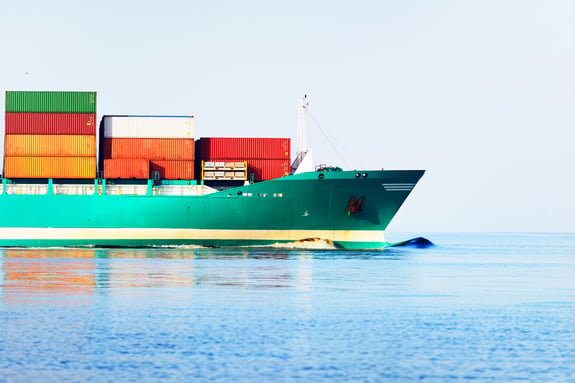From shippers’ corporate sustainability goals and the IMO 2020 rules aimed at reducing ocean vessel emissions, to institutional investors’ ESG initiatives and the Paris Agreement, the past decade has seen a significant shift toward the promotion of sustainable business practices. But when it comes to turning words into actions, the first few steps are often the hardest.
Especially when heightened demand for imports means more goods are traveling more miles on more ships and planes. In a world where 90 percent of the world’s freight travels by ocean, shipping emissions actually grew in 2020 — a year where new regulations were meant to start bringing those numbers down.
For logistics service providers, who neither control shippers’ demand for freight nor the types of vessels, fuels or shipping lanes carriers use, the challenge to meaningfully reduce emissions is that much harder.
Plus, due to immense competition, the logistics industry is not yet able to provide the transparency needed to truly compensate, reduce or avoid emissions. For this reason, industry metrics heavily rely on aggregated data models that do not reflect reality. And most processes do not enable proactive decision making, but rather focus on retroactive reporting. The industry needs a better approach to data gathering and sharing data across networks.
So where do you begin?
Don’t just compensate for emissions, avoid them
Can you really say your business has achieved its sustainability goals if all you’re doing is paying for carbon offsets? Where does that compensation go? And does it do anything to change practices across a shipper’s supplier network or a carrier’s fleet? The best way to address a challenge is to be direct. The focus should be on avoidance not only of carbon emissions, but also sulphur and nitrogen oxides, black carbon, and others. Merely offsetting emissions is not good enough; the primary focus has got to be on avoidance, and this will require companies to invest in zero carbon initiatives.
Sustainability data needs to be accessible and actionable
Emission figures in ocean freight, for instance, are typically aggregated at a trade lane level, so shippers will see the same emission number for a container shipped on a dirty or a green vessel. This aggregate number provides an artificial picture of how that cargo actually moved. But even if carriers aren’t providing a clear enough set of data, there are still ways for LSPs and shippers to get the data they need to make more informed operational decisions across their ocean bookings. For instance, Smart Freight Centre’s Global Logistics Emissions Council (GLEC) framework for logistics emissions accounting and reporting data can be incorporated into logistics decision making processes through API integration. There are also partners out there like Slync.io who can help you integrate that type of information into operational processes.
Emissions require an agreed monetary value for budgeting
Calculating emissions accurately will lead companies down the path of judging energy consumption, and thus enable shippers to get a better grip on fuel adjustment factors, which are often used by carriers as a part of their profit component, especially where all-in rates are applied. Carriers are not in favor of being fully transparent about their fuel consumption and thus have an interest in obscuring figures. This obstacle will need to be overcome by all parties before meaningful progress can be made.
If sustainability is the objective, treat it like one. Until sustainability is not thought of as a cost factor in logistics budgeting, there will be little improvement in the industry. Despite major marketing efforts by logistics companies and shippers, sustainability has not yet moved from a strategic concept to becoming an operational decision-making factor. Accurately measuring a true carbon footprint requires companies and networks to openly share data and rethink their procurement processes.
Nikolaus Sievers is Vice President of Global Customer Success at Slync.io where he helps the company's clients achieve their desired operational outcomes. Prior to joining Slync.io, Nikolaus spent over a decade at Kuehne + Nagel.
.png?width=658&height=162&name=1_slync_logo_word_mark_blue_black@2x%20(1).png)
